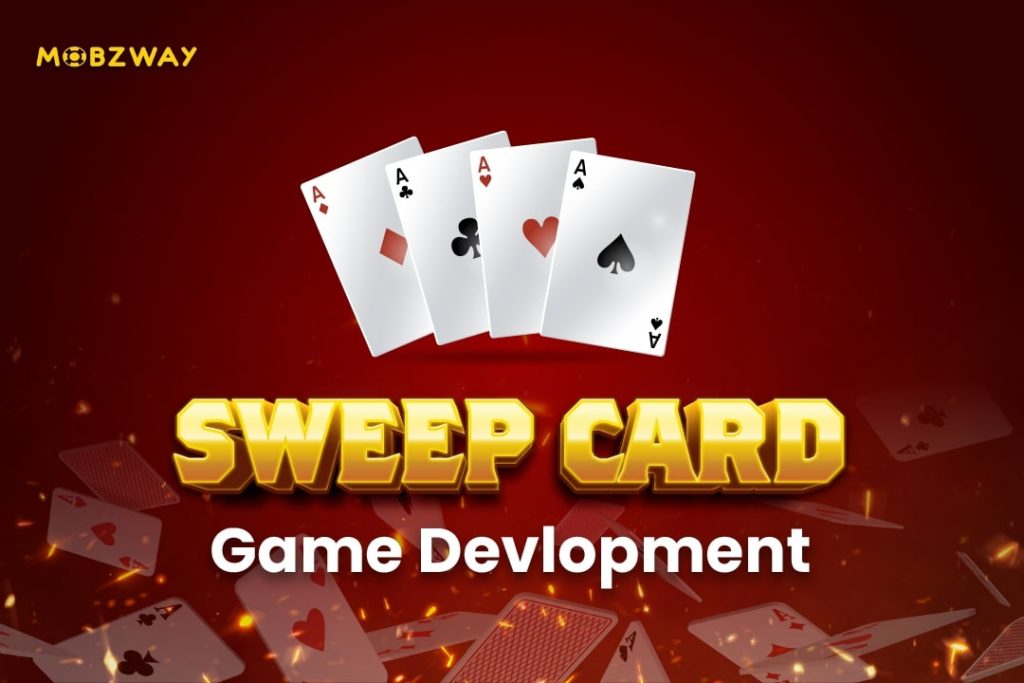Contact Us
Are you interested in sweep card game rules?
If you are, you are at the right place. Here we shall be going through all you need to know about the Sweep card game and developing such a game. By the end, you'll be well-equipped to embark on your Sweep game development journey and bring your unique vision to life.
So, let’s get right into it:
What is a Sweep Card Game?
Before we start discussing the sweep card game rules, let’s first look at a brief definition. Sweep card game, also known as Seep card game or Sip card game, is a captivating card game enjoyed by people worldwide. It blends strategic thinking with an element of chance, making it a fun and engaging experience for players of all ages. Let’s learn more about the seep card game online.
Core Sweep Card Game Rules
Understanding the core Sweep card game rules is the foundation for successful development. This game typically utilizes a standard deck of 52 cards without jokers. The objective is to capture valuable cards from a central layout, often called the "floor," by strategically playing cards from your hand. Here's a breakdown of the essential gameplay mechanics for Sweep card game rules.

Card Value
Only a specific set of cards holds point value in a sweep card game. Spades are worth their face value (Ace being 1 and King being 13). In addition to this, all Aces from other suits and all Diamonds are worth 1 point each. The remaining cards (other than Spades, Aces from other suits, and Diamonds) have no point value.
Playing a Turn
On your turn, you'll play one card from your hand face-up to the floor. This card can be used to capture other cards already present on the floor, following specific capture rules.
Captures
To capture cards, the value of the played card must be equal to the combined value of the cards you wish to capture. For example, if you play a Queen of Spades (worth 12), you can capture a pile containing two Sixes of Spades (worth a combined value of 12). Captured cards are added to your score pile.
Houses
You can create "houses" on the floor by placing two or more cards of the same rank together. Houses can only be captured as a whole if the capturing card matches the combined value of the house. For example, a house of two Queens can only be captured by another Queen.
Team Play and Baazi
Sweep card games can be played with teams or individually. A round of Sweep is called a "Baazi." The goal is to achieve a lead of 100 points over your opponent(s) at the end of a Baazi. This can be achieved through capturing valuable cards and potentially scoring bonus points for a "Sweep," which we'll discuss later. Remember, this is a simplified overview of the core seep card game online rules. There are additional nuances and variations depending on the region, so feel free to explore further to add depth and unique elements to your game!
How to Play Sweep Card Game
It’s time to learn how to play the Seep card game online after we have learned the rules, let’s get right into it:
Players and Teams
Grab some friends! Sweep can be enjoyed by 2-4 players, either individually or in teams.
The Deck
A standard deck of 52 cards, minus the Jokers, is all you need.
Objective
Your goal is to be the first to accumulate 100 points by cleverly capturing valuable cards from the center pile, often called the "floor."
Card Values
Not all cards are created equal! Only specific cards hold points
- Spades are worth their face value (Ace = 1, King = 13).
- Every Ace from any suit and Diamonds is worth 1 point each.
- The rest of the deck holds no point value.
Capturing Cards in Sweep card game rules
To capture cards from the floor, the value of the card you play from your hand must match the combined value of the cards you wish to capture. For example, if you play a Queen (worth 12) on the floor where two 6s are already placed, you can capture both since 12 (Queen) equals the combined value (2 x 6) of the cards you're capturing.
Houses
Want to capture even more cards at once? Build "houses" on the floor! Place two or more cards of the same rank together to create a house. To capture a house, you need to play a card that matches the total value of all the cards in the house. Remember, you can only capture the entire house at once!
Winning a Round
A round of Sweep is called a "Baazi." The team or player who accumulates a lead of 100 points over their opponents at the end of a Baazi wins the round.

How to Develop a Sweep Game A Step-by-Step
Guide for Sweep Card game rules
Sweep game development can be a fulfilling journey, allowing you to bring your vision to life and share it with players worldwide. Here's a step-by-step guide to help you navigate the process.
1. Planning and Design
The foundation of your seep card game online starts with a clear vision. Begin by defining your target audience. Understanding your target audience will help you tailor the features and overall complexity of your game. Next, solidify your unique concept. out these ideas by creating a comprehensive Game Design Document (GDD). This document serves as your blueprint, outlining the core mechanics, gameplay flow, win conditions, and any special features you envision.
Want to develop a card game: Card game development company
2. Development
With a clear plan in place, it's time to translate your vision into code. The first step involves choosing the development tools and technologies that best suit your needs and skill set. Once you have your development environment set up, begin by coding the core gameplay mechanics outlined in your GDD. This includes card interactions, capture rules, house creation, scoring systems, and turn management. Rigorous testing at this stage is crucial. Playtest the core mechanics to identify and address any bugs or imbalances that might hinder the gameplay experience. If you plan to include an AI opponent, this is where you'll design and implement its decision-making logic. The goal here is to create a challenging and engaging opponent. Consider incorporating different difficulty levels with varying strategies for the AI to employ.

3. Testing and Refinement
Testing is an ongoing process throughout sweep card game development. Don't wait until the final stages to start playtesting! Gather diverse groups of players to test your game at every stage of development. This allows you to identify bugs, balance issues, and areas for improvement early on. Actively collect and analyze feedback from playtesters. Their insights are invaluable for refining the game mechanics, user interface, and overall difficulty.
4. Additional Features and Content (Optional)
The core sweep card game gameplay is engaging on its own. But you can further enhance player experience by incorporating additional features and content. Therefore, you can also try to implement leaderboards and achievement systems to boost player engagement and encourage them to keep playing. Players can strive to climb the leaderboards by accumulating points or completing specific in-game challenges. Earning achievements can unlock rewards or customization options, providing a sense of accomplishment and encouraging them to return for more.
5. Launch and Marketing
With a polished and tested Sweep game in hand, it's time to share it with the world! The first step is choosing the platform you want to launch your game on. After selecting your platform, develop a marketing strategy to reach your target audience. Utilize social media platforms to build anticipation and excitement for your game. Create engaging trailers or gameplay videos that showcase the core mechanics and unique features of your Sweep game.
You can also read about Dragon Vs Tiger Game Apps
Conclusion
In this blog, we explored the Sweep card game rules, delved into development processes, and as well as how to play the sweep card game with rules. By equipping yourself with this knowledge, you're well on your way to developing a captivating game that will enthrall players.
FAQs
Q Are there any variations in Sweep card game rules?
Yes, there can be regional variations in Sweep game rules. Some variations might involve playing with a different number of cards, using Jokers, or having different scoring rules for specific cards. Researching these variations can add depth and unique elements to your game.
Q What tools and technologies are suitable for Sweep game development?
The choice of tools depends on the platform you target (mobile, PC, etc.). Popular options include game engines like Unity or Unreal Engine for more complex games or simpler tools like Construct 3 or Godot for quicker development. Programming languages like C#, Java, or JavaScript might be required depending on your chosen engine.
Q How can I balance the difficulty of the AI opponent?
Balancing the AI is crucial. For beginners, a basic AI that prioritizes simple captures might be suitable. As difficulty increases, the AI can employ more complex strategies like house building and strategic card usage. Playtesting with different AI behaviors will help you find the sweet spot between challenge and frustration.
Q What are some effective ways to monetize my Sweep card game?
Popular monetization options include
- In-App Purchases Offer purchasable items like cosmetic upgrades, power-up bundles, or additional card decks for mobile games.
- Ad Integration Implement non-intrusive ads that appear between matches or during gameplay breaks.
- Subscription Model Consider a premium subscription model for PC games, offering exclusive features, ad-free gameplay, or access to additional content.
Q How important is marketing for my Sweep card game?
Marketing is vital for reaching your target audience. Utilize social media platforms, create engaging trailers or gameplay videos, and consider influencer marketing to promote your game.




